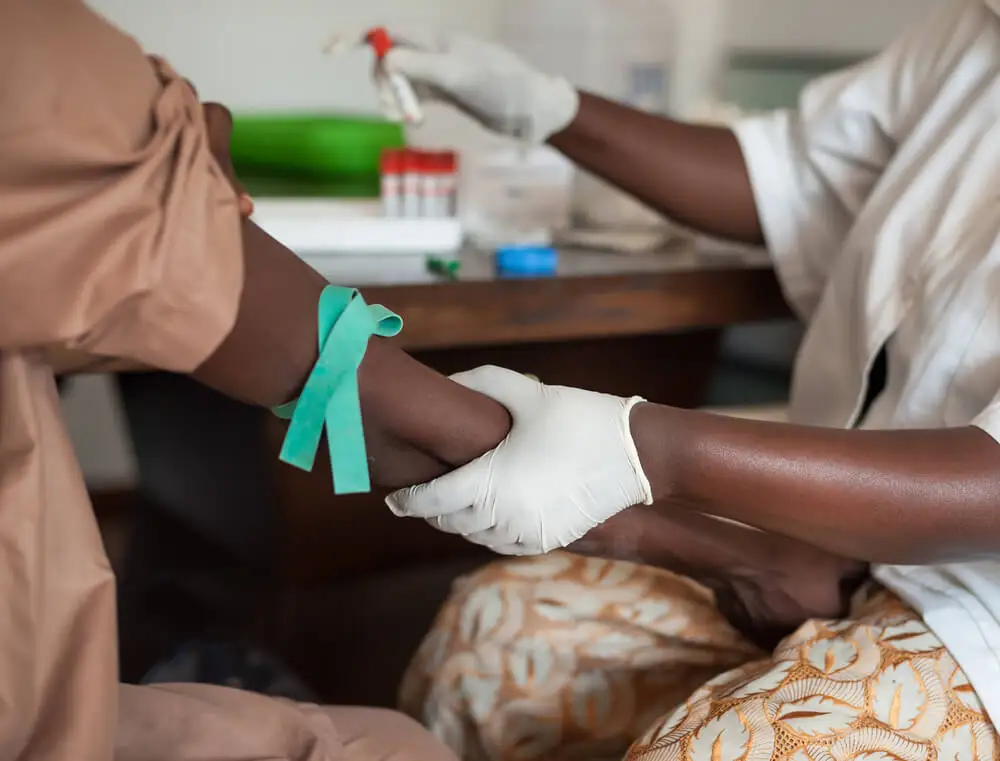The 13 Most Dangerous Viruses for Humans


Written and verified by the doctor Maryel Alvarado Nieto
Viruses are the main cause of infections in the world, causing a wide variety of clinical pictures and producing different degrees of disease. These tiny particles are considered obligate intracellular parasites since the only way to replicate is by using the machinery of the cells they invade. Although there’s a wide range of them, in this article, we will focus on the most dangerous viruses for humans.
That said, it’s important to bear in mind that the definition of danger cannot be reduced to high mortality from infection, but must also include those viruses that are associated with severe sequelae in humans. For this reason, we will group these infectious agents according to the form in which they cause diseases.
Congenital infections: Viruses that are dangerous to humans during pregnancy
Some infections are considered dangerous during pregnancy because they interfere with the normal development of the product of conception. Likewise, transmission during labor carries a risk for the newborn.
Therefore, good prenatal control is necessary to detect them. Among the causative agents of these infections are viruses responsible for the following:
- Miscarriage and spontaneous abortion
- Fetal death
- Preterm delivery
- Low birth weight
- Congenital malformations
The literature usually groups these infections under the acronym TORCH, which includes the main causative agents of neonatal communicable disease. The search for TORCH infections is common to determine the presence of these pathogens by performing serology during gestation.
1. The rubella virus
Congenital rubella syndrome is a severe preventable condition in which the newborn has defects in various organs. Among the most common alterations, the following are described:
- Deafness
- Microcephaly
- Microphthalmia
- Congenital cataract
- Cardiac abnormalities
The main risk factor is the infection of the mother with the rubella virus during the first trimester of pregnancy. However, infection at later stages of fetal development isn’t considered harmless.
We think you may be interested in reading this, too: 7 Natural Ways to Boost Your Immune System and Prevent Colds and the Flu
2. Cytomegalovirus (CMV)
Although CMV is the leading cause of congenital infection, its effects depend on the gestational age at which the infection occurs. It’s considered dangerous in pregnancy because it can lead to the development of significant neurological deficits.
These include the following:
- Various degrees of hearing loss
- Delayed psychomotor development
- Visual disturbances
- Cerebral palsy
- Epilepsy

3. Herpes simplex, a dangerous virus for newborns
Congenital herpes simplex infection is rare, but the clinical picture it produces is considered serious. The newborn is usually infected through the birth canal, developing the characteristic lesions in the days following birth.
More than half of the infants exposed to herpes simplex have neurological involvement as a result of infection of the central nervous system, while in other cases there may be a disseminated picture. The introduction of antiviral treatment has been shown to reduce the mortality associated with this congenital infection.
Like this article? You may also like to read: Eliminate Toxins with These 8 Foods for a Strong Immune System
Viruses that are dangerous because they causing infections that can be lethal
There are also viral infections associated with high lethality – i.e. their transmission can be considered almost synonymous with death. However, these diseases are quite rare, since they do not correspond to human infections.
Moreover, since the geographical areas of dissemination are well delimited and preventive measures can be applied, the risk of contagion can be reduced. Nevertheless, there are still populations vulnerable to these deadly viruses.
4. Rabies
Rabies is a viral encephalitis of some animals that’s transmitted to humans through contact with the saliva of the sick person. This usually occurs through bites.
Although this virus is distributed worldwide, most cases are concentrated in Africa and Asia. The main reservoirs of these dangerous viruses are bats and foxes, but it’s more common for dogs and cats to spread it to humans.
Rabies is considered to have a mortality risk of close to 100%. However, a post-exposure prophylaxis can reduce mortality, making it a preventable disease.
It’s important to note that once neurological symptoms begin, there’s almost no chance of improvement. On the other hand, systematic vaccination of domestic animals prevents their infection.
5. Ebola
Another virus whose reservoir is not human is Ebola, which causes a serious disease with a clinical picture and subsequent multiorgan failure that leads to the death of 50% of patients. Ebola virus disease is characterized by gastrointestinal involvement and has been responsible for several outbreaks in Africa.
Subsequent investigations have been able to determine the first case of infection in most of these outbreaks. However, it has not been established which reservoir caused the outbreaks.

6. The Marburg virus
Like Ebola, the Marburg virus belongs to the Filovirus family and produces a similar gastrointestinal picture. However, the lethality described for these patients is as high as 90% of cases.
Several vaccine prototypes are currently in various stages of research and are intended to confer immunity to these types of viruses. Although the results appear promising, further studies are needed.
Chronic viral infections associated with the development of cancer
There are some viruses that, despite causing underdiagnosed infections, have scientific evidence of being linked to the development of cancer. In some cases, the mechanisms by which these viruses are considered oncogenic are not fully described, but the association has been demonstrated.
7. Human papillomavirus (HPV)
HPV is the most prevalent sexually transmitted infection (STI) in the world. There are more than 170 different genotypes of this virus, some of which cause genital warts.
Others, however, tend to go unnoticed because they don’t produce obvious clinical manifestations. However, among the latter group, there are several serotypes involved in the development of cervical cancer.
Among these, types 16 and 18 stand out, as they are the most frequently present in cervical cancer precursor lesions. It is important to highlight that, being an STI, HPV infection may be preventable through the use of barrier methods and the administration of the vaccine.
Likewise, early detection of cellular changes suggestive of infection is possible through periodic cytology.
We think you may also find this article interesting: The Billings or Cervical Mucus Method: What Is It and What are its Risks?
8. Hepatitis B and C: Why are they considered dangerous viruses?
For their part, hepatitis B and C viruses are also considered sexually transmitted infections, since this is their main form of contagion. Both agents are implicated in the development of hepatocellular carcinoma, which is the fourth leading cause of cancer deaths in the world.
It’s important to remember that there are vaccination schedules that effectively prevent a hepatitis B infection. Likewise, there’s currently antiviral therapy capable of preventing progression to cirrhosis in chronic hepatitis C infections, thus reducing the incidence of the development of this carcinoma.

9. The Coronavirus family: Causes of global alerts
Although coronaviruses have been known to cause mild illnesses in humans since the 1970s, it’s also true that during the 21st century they have been responsible for some epidemiological alerts worldwide. In 2002, SARS-CoV-1 emerged, causing severe acute respiratory syndrome (SARS), which affected almost 10,000 people in 32 different countries.
Then, in 2012, MERS-CoV emerged in Saudi Arabia, infecting more than 2,500 people in 27 countries. And since 2019 emerges in China the SARS-CoV-2, producer of the disease called COVID-19, with high transmission through respiratory secretions.
Due to the high rate of contagion, the disease spread rapidly to all continents, being declared a pandemic in March 2020.
Other dangerous viruses
Several viruses have the capacity to produce febrile illnesses, which are usually followed by a phase characterized by the appearance of hemorrhagic manifestations. In these patients, treatment is usually supportive, with measures aimed at preventing the spread of infection to others.
These viruses include the following:
- Crimean-Congo hemorrhagic fever (CCHF): This is a disease caused by a Nairovirus, whose main form of transmission is the bite of an infected tick. The lethality of CCHF ranges from 3% to 30%.
- Guanarito virus: This causes Venezuelan hemorrhagic fever, a disease endemic to the center of the country and associated with a lethality of up to 30%.
- Bolivian hemorrhagic fever: This causes by the Machupo virus. Its carrier is a rodent and this virus affects populations in northern Bolivia. Its lethality reaches 20%.
- Junín virus: This virus causes Argentine hemorrhagic fever, which is frequent in rural areas of that country. It’s associated with a lethality that varies between 10% and 20%.
Vaccination can eliminate the danger of viruses
The best example for continuing to implement immunization programs is provided by a now eradicated viral infection: smallpox. This virus was responsible for devastating effects on vulnerable populations for centuries, leaving varying degrees of sequelae in survivors.
However, thanks to vaccine development and mass immunization protocols, human smallpox was eradicated in 1980. Can we repeat history with any of these viruses that are dangerous to humans?
All cited sources were thoroughly reviewed by our team to ensure their quality, reliability, currency, and validity. The bibliography of this article was considered reliable and of academic or scientific accuracy.
- Cofre, F.; Delpiano, L.; Labrana, Y.; Reyes, A.; Sandovaly, A.; Izquierdo, G.; Síndrome de TORCH: enfoque racional del diagnóstico y tratamiento Pre y Postnatal. Recomendaciones del Comité Consultivo de Infecciones Neonatales Sociedad Chilena de Infectología; Revista Chilena de Infectología; 33 (2): 191 – 216; 2016.
- Collados, R.; Casado, J.; Infección Congénita por Citomegalovirus: la Gran Desconocida; Medicina de Familia SEMERGEN; 37 (10): 549 – 553; 2011.
- Domarus, A.; Farreras, P.; Rozman, C.; Cardelach, F.; Nicolás, J; Cervera, R.; Farreras Rozman. Medicina Interna; 19na Edición; Elsevier; 2020.
- Frantchez, V.; Medina, J; Rabia: 99.9% Mortal, 100% Prevenible; Revista Médica del Uruguay; 34 (3): 164 – 171; 2018.
- Jacob, S.; Crozier, I.; Fischer, W.; Hewlett, A.; Kraft, C.; de la Vega, M.; Soka, M.; Wahl, V.; Griffiths, A.; Bollinger, L.; Kuhn, J.; Ebola Virus Disease; Nature Reviews Disease Primers; 6 (13); 2020.
- Mandell, J.; Dolin, R. Blaser, M.; Enfermedades Infecciosas. Principios y Práctica; Octava Edición; Elsevier Sanders; 2015.
- Melcon, Mario O., Manuel J. Somoza, and Carlos Mario Melcon. “Fiebre hemorrágica argentina: complicaciones neurológicas.” Neurología Argentina 14.1 (2022): 13-25.
- Poot, M.; Reyes, B.; Torres, M.; Virus Rabia: ¿Sentencia de Muerte?; Universidad Autónoma de Yucatán; Brain Awareness Week; 2019.
- Pyle, Jesse D., and Sean PJ Whelan. “Isolation of reconstructed functional ribonucleoprotein complexes of Machupo virus.” Journal of virology 95.22 (2021): e01054-21.
- Sampedro, A.; Aliaga, L.; Mazuela, P.; Rodríguez, J.; Diagnóstico de Infección Congénita; Enfermedades Infecciosas y Microbiología Clínica; 29 (Suplemento 5): 15 – 20; 2011.
- Solano, A.; Solano, A.; Gamboa, C.; Actualización de Prevención y Detección de Cáncer de Cérvix; Revista Médica Sinergia; 5 (3): e395; 2020.
- Zapata, L.; Prevención y Eliminación del Síndrome de Rubeola Congénita; Revista de Obstetricia y Ginecología de Venezuela; 66 (3); 2006.
- Zhao, F.; He, Y.; Lu, H.; Marburg Virus Disease: A Deadly Rare Virus is Coming; BioScience Trends; 16 (4): 312 – 316; 2022.
This text is provided for informational purposes only and does not replace consultation with a professional. If in doubt, consult your specialist.








